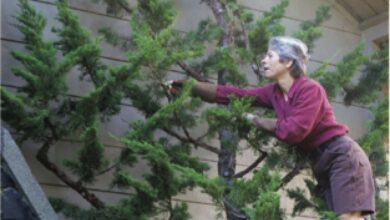How to Setup a Neighborhood Watch
How it Works
Credit: https://www.protectamerica.com/neighborhood-watch
Neighborhood watch groups sprang up in the 1970’s and early 1980’s as a resource to inform citizens of security and safety issues in their neighborhoods. They establish a system that can act as a monitor in addition to law enforcement.
1) Establish a group
Start by gauging interest to see if a group is something your neighborhood wants to establish. Put together a small team that can plan, talk about needs, gauge broader interest, evaluate possible challenges, and work as the advisory board for the watch.
Find a meeting location. This could be a home, church, or local community center. Plan agendas to make sure the meetings run smoothly and mix business with some socializing so members feel engaged.
You’ll need to reach out to local police, sheriff’s offices, or crime stoppers groups to talk to them about your watch and crime in your area. They can accredit you with their official stamp. Depending on where you live, this may be necessary to place signs in your area.
Lastly and most importantly—promote and market your meetings. Let the neighborhood know via social media, fliers, phone calls, or a combination of these that you are starting a program. Media and local businesses can also help build a presence.
2) National Neighborhood Watch
The National Neighborhood Watch program began in 1972 through partial funding from the National Sheriff’s Association and a grant from from the Bureau of Justice Assistance, Office of Justice Programs at the U.S. Department of Justice. To see if there is already a watch set up in your community you can search on their database here.
3) Relieve Anxiety
Oftentimes people are reluctant to start watches due to the fear of retaliation. They believe that criminals will harm them. This is most prominent in communities with gang violence. Many law enforcement agencies do provide outlets to provide information anonymously, but if you are a witness to crime it is vitally important for prosecutors to hear your testimony. Encourage members that participation won’t place them at risk, and relieve any anxieties they may have.
4) Start the Block
Promote block captains who will inform the neighborhood of what is happening on their specific street corners. These captains will also communicate with law enforcement to let them know what’s happening in the neighborhood as a whole. They are the connecting point between the neighborhood and watch leaders.
5) Communication is Key
Establish the method that you’ll use to communicate regularly. Whether that be e-mail, social media, phone, newsletter, or a combination of many channels.
6) Know the Neighborhood
Have names, phone numbers, and a map of participants and their households. This can help you get to know each other, and have an idea of who hasn’t been involved yet that you may want to invite.
7) Contact Law Enforcement
Some local law enforcement has eligibility requirements before they allow posting of neighborhood watch signs. This could be the number of houses or members. Check with them to meet city standards. Sometimes funds are available from law enforcements agencies to encourage watch programs as well. Law enforcement will be more successful with you around.
8) Watchers are NOT Vigilantes
It’s important to stress that watch groups ARE NOT vigilantes and will never assume the role of the police. Suspicious activities that are seen need to be reported to law enforcement
9) Involve Everyone
No matter what size or age, everyone in the neighborhood is of value. Recruit them and bring them together. More people means more coverage. Younger kids can be used to patrol on bicycle, roller skates, or skateboard; tools that are quick and not accessible to older adults.
10) Meetings
Bring guest speakers and relevant entertainment or information to meetings to keep the cause fresh and people excited. Make sure these meetings are accessible to everyone, and they accommodate people with disabilities.
11) Don’t Let Rumors Circulate
Reduce any worry in the neighborhood by getting truthful information out quickly. Only let the facts circulate so rumors don’t startle residents.
12) Upkeep the Neighborhood
Untrimmed greenery, trash, excessive materials outside, and other uncleanliness can encourage burglars. Keep the neighborhood clean and tidy.
13) Don’t be Aggressors
Patrol programs are useful ways to monitor the neighborhood, but never assume the role of aggressor. The role of a watch is to deter and monitor crime, not to be the hand of justice.
14) Have Home Security and Display Signs
Encourage residents to purchase home security systems and display yard signs. This will further deter burglars. Other home security features like motion sensor lights or security cameras are important as well.
15) Be a Community
These groups can extend their reach away from just crime. Things like gang violence, drug abuse, elderly issues, crime in schools, and sexual assault prevention bring neighbors together through events, activities, awards, et cetera.
9) Instant Communication
Utilize WhatsApp to communicate in real-time with everyone in your neighborhood.




